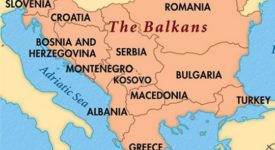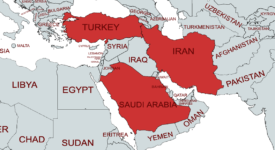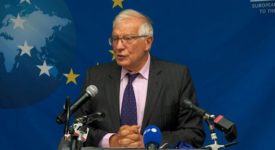Graham Avery (Oxford University, UK)
Serena Kelly (University of Canterbury, New Zealand)
An important innovation made by the European Union’s Constitutional Treaty and the later Lisbon Treaty, the European External Action Service (EEAS) survived the controversy which surrounded both treaties and finally came into existence in January 2011. It is undeniable that the EEAS proposals hold much promise for improving the EU’s effectiveness, capability and coherence on the world stage.
Although the treaty’s description of the role of the EEAS was resolutely vague, its purpose was mainly connected to supporting the role of the newly appointed High Representative for Foreign and Security Policy, Catherine Ashton. The EEAS was designed to enable the EU to speak with one voice around the world. It is represented in 136 locations throughout the world by ‘Delegations of the European Union’. However, three years on, the EEAS’s mandate remains unclear to many, including those who are working within the new structure. For instance, although the EU Delegations “have a similar function to those of an embassy,” the practical meaning of this remains unclear. Indeed, it appears that many of the EU Delegations’ tasks still remain the same as that of the Commission Delegations, which they replaced, with the only notable change being the email address.
This deficit may be attributed to a number of issues. Not only has the High Representative herself faced criticism, but despite Member States supporting the Lisbon Treaty, they have failed to give the EEAS their full support. Some of this division may be attributed to simple jealousy – a concern by some Member States that others may gain more influence and high level positions in the EEAS. It could also be connected to uncertainty surrounding the role of the EEAS, as this makes Member States less likely to support its mandate. Until now, there appears to be a reluctance to clarify what exactly should be the role of the EEAS (both at present and in the future). Further, it appears that the EEAS has suffered directly from inter-institutional fighting over its control between the Commission and the Council. Meanwhile the euro-zone debt crisis has – regrettably – distracted the attention of European leaders from the business of foreign affairs.
On the other hand, there is evidence that the EEAS has had some successes, at least in certain regions – for instance, in the Balkans where its visibility and effectiveness have been noted and substantial progress has been made in bringing Serbia along the road closer to eventual EU membership. Although the EU failed to present a united response to the Libyan crisis, it has begun with the aid of proposals from the EEAS to redefine its policies and assistance to the countries affected by the ‘Arab awakening’. Indeed, this regional priority makes sense as the EU is committed to supporting neighboring countries where either development assistance is necessary or where it could play a peacekeeping role.
Despite the praise and criticisms, the potential of the EEAS remains. This potential lies in its capability to speak on behalf of the EU as a whole in the field of foreign and security policy, consequently giving more strength to EU declarations, decisions and actions. The EEAS can provide the EU with a more coherent, visible and effective way of conducting foreign policy both at the ‘headquarters’ and outside the EU. Moreover, it creates a structure in which national diplomats and officials of EU institutions work side-by-side. This offers the chance for European policy-making to be enriched by national experience, and national policy-making by European experience. The fact that national diplomats return to their service of origin after a period in the EEAS means that their EU experience will reinforce the European dimension of national policy-making.
In the future, young Europeans making a career in foreign affairs will be able to work both in national diplomacy (in a Foreign Ministry or Embassy abroad) and in a European service (in Brussels or a Union Delegation in a non-EU country). The next generation of diplomats will enjoy a better understanding of the practical realities of European and national action, and have the chance to develop a truly European diplomatic culture. Moreover, as national Foreign Ministries in Europe face continuing pressures from Finance Ministries for savings in public expenditures, then the EEAS can provide an alternative means of providing common services for member states in consular affairs, reporting on political and economic developments, or even in other fields.
The EEAS has had a modest beginning – indeed, the title, ‘External Action Service’ is very modest, if one considers that it may be the embryonic precursor of a European Diplomatic Service. Creating new diplomatic structures takes time – the development of national diplomacies in Europe had taken hundreds of years – and the results can only be evaluated in the longer term. For now, much still remains to be done to bring the EEAS up to cruising speed and, with good sense and good management, the problems of organization of the EEAS can be overcome. It can provide a new impetus by bringing the EU’s resources together in a streamlined system for developing, deciding and executing European foreign policy. It should create new ideas and new synergies and enable the EU to act more decisively in international affairs.
* Dr Serena Kelly is a Post-Doctoral Fellow at the National Centre for Research on Europe, University of Canterbury, New Zealand.
* Mr Graham Avery is a Senior Adviser to the European Policy Centre. He is also Senior Member of St. Antony’s College, Oxford University, and Honorary Director-General of the European Commission, for which he worked from 1973 to 2006.






